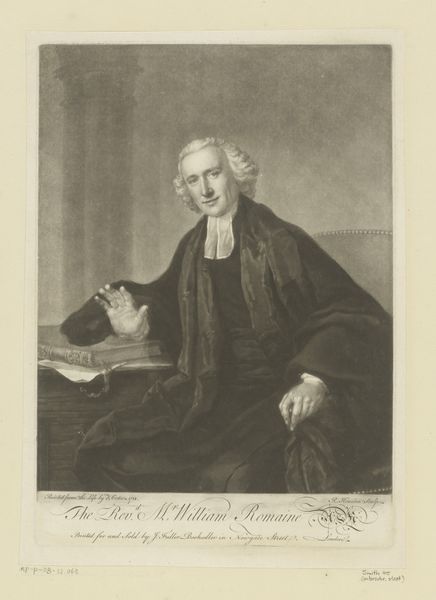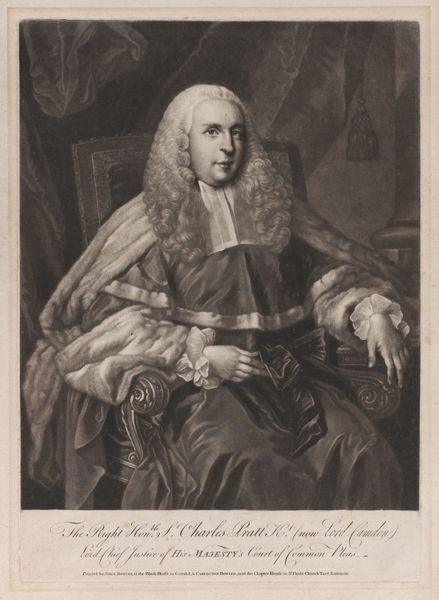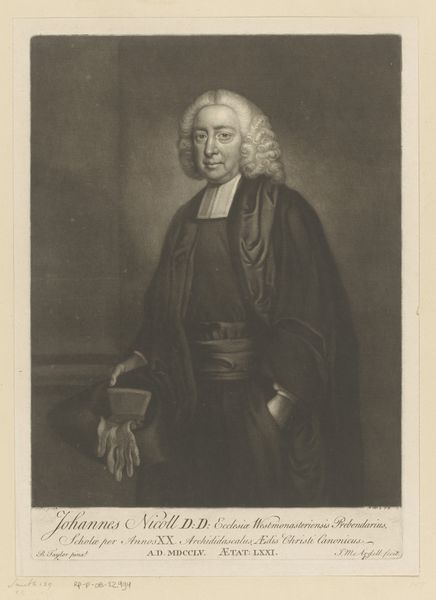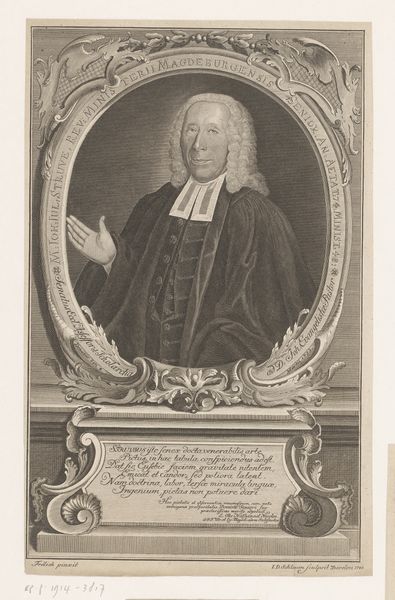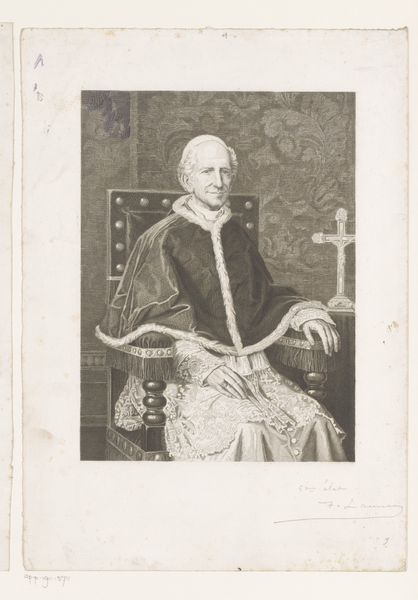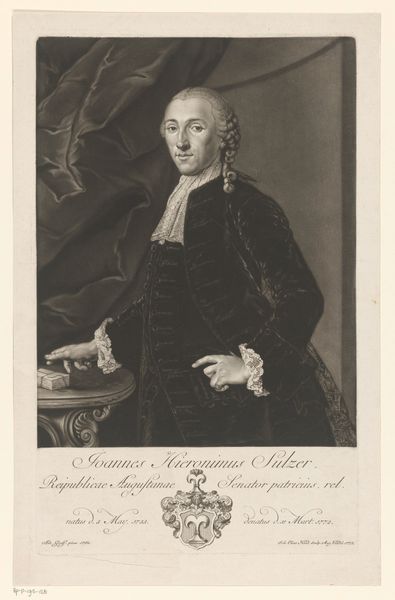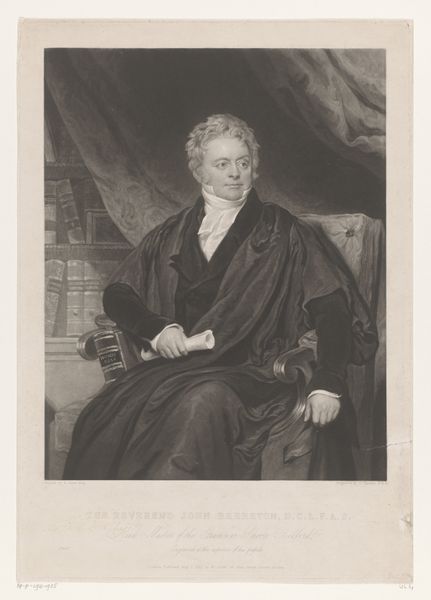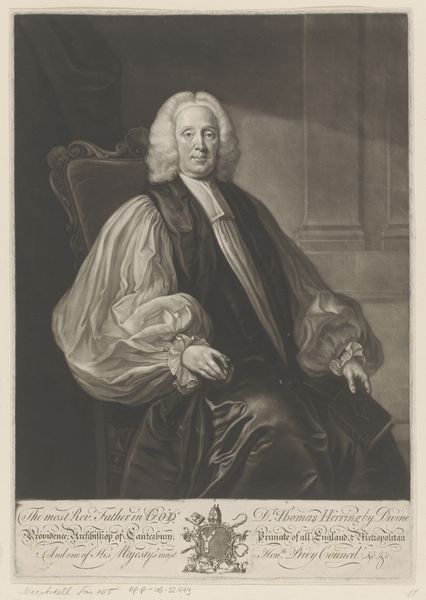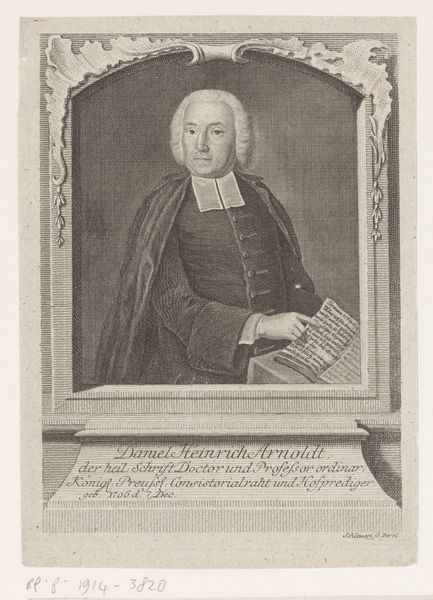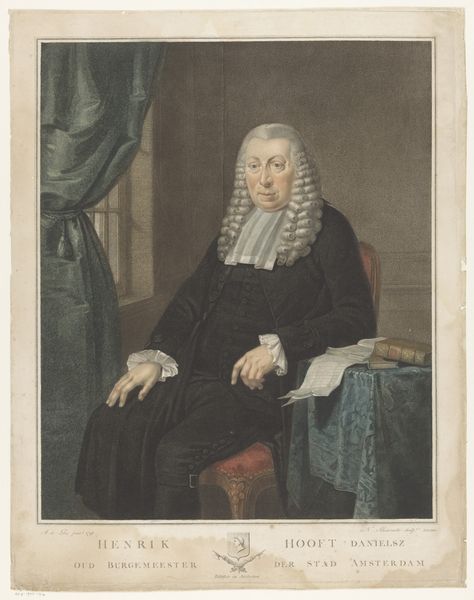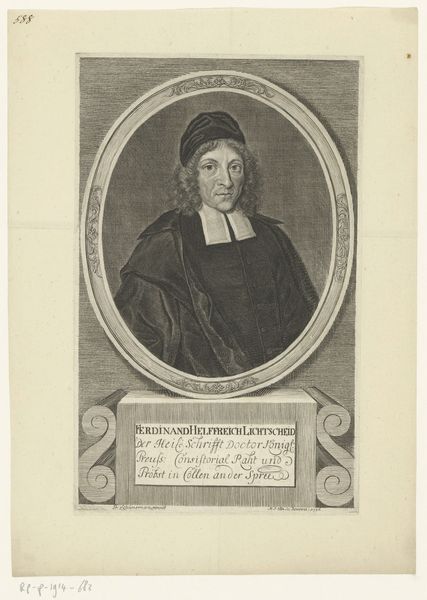
print, engraving
#
portrait
#
neoclacissism
# print
#
19th century
#
history-painting
#
engraving
Dimensions: height 380 mm, width 275 mm
Copyright: Rijks Museum: Open Domain
Curator: This is an engraving titled “Georg Christi Knapp,” created in 1817 by Friedrich Wilhelm Bollinger. It’s part of the Rijksmuseum collection. What's your immediate reaction to it? Editor: Austere, isn't it? Almost monochromatic in its tonality, which emphasizes the somber mood and… restraint. Curator: Indeed. Consider the lines. Notice the careful detailing in the drapery and the precise rendering of Knapp's features. There's a clear engagement with neoclassical principles. Look at how the light is used to model the form, almost sculpturally. Editor: But that austerity reads as something else to me, considering Knapp’s historical role. As a professor of theology during a time of social upheaval, that sombre mood maybe a signifier of political realities and religious contemplation during periods of conflict. Curator: An intriguing interpretation. From a formalist standpoint, the placement of the book invites an intellectual reading, doesn't it? The sitter is posed thoughtfully; we should look at the composition to investigate themes around the intellectual nature of Knapp's pursuits. Editor: Well, think about access to theological education at the time; I cannot disconnect the book, and the overall impression of scholarship, from matters of social privilege. Who had access, who was excluded and why? A seemingly straightforward portrait opens into layers of cultural power, wouldn't you agree? Curator: The image undeniably projects authority. The sitter gazes outwards; its purpose is representational of position and power. The interplay between the textures—the smoothness of his face against the folds of his robe—draws the eye in different ways. Editor: The visual rhetoric serves a function. Was Knapp viewed as progressive, perhaps? We can assess from the composition alone. And his legacy—did it challenge existing norms, or perpetuate them? That robe could symbolize solidarity, or continued suppression. It depends. Curator: Thank you for contextualizing the historical setting of this very skilled portrait engraving, considering the intersections between history and person. I had only considered that his hand draws your eye towards the implied thoughts occurring. Editor: Absolutely. It's by placing historical images into our own frames of reference and lived experiences that will challenge contemporary perceptions and further analysis.
Comments
No comments
Be the first to comment and join the conversation on the ultimate creative platform.
